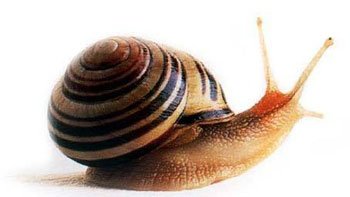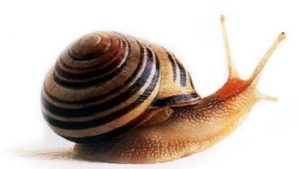domestic katas, time and freedom


Eastern martial arts – and other ‘physical motion disciplines’, Kabuki for example – are taught through forms, or katas. These are ways to train the subconscious so that it assimilates a particular linked pattern of motion – a pattern that is a distillation of a ‘system’. If we consider T’ai Chi, a martial art I studied for years, there are a fixed number of these katas that appear to be a complex dance, performed solo and in slow motion. At first the practitioner cannot even ‘see’ the kata, however many times it is performed in front of him. Asked to simply copy the poses and movements, a beginner is often convinced he is making a reasonable approximation, but, to the eye of the more practiced, the beginner’s attempts are bizarrely contorted. With long practice, the kata comes closer and closer to that of the master’s and, by this means, the system that the kata codes becomes part of the practitioners subconscious. Theoretically, the practitioner should be able to now fight in the ‘style’ of the system that devised the kata.
But we do not need to study a martial art to learn any number of similar forms, or katas. A human being will not only learn, but invent all manner of katas as he goes about his normal life. When we move into a new house, we are like the T’ai Chi beginner. We see the rooms, the placement of doors, of windows, of electrical sockets; we will quickly work out how to go to the bathroom, the bedroom, how to cook in the kitchen. We decide into which cupboard to put our plates, into which to put our cups and mugs. We decide where to store our food, where to put our clothes. As we settle into our new place, we begin to create and learn the katas for ‘operating’ it. Earlier I said we ‘see’ this new home, but I meant ‘see’ in the way the T’ai Chi beginner sees his master performing a kata – imperfectly. Of course, that first arrangement of our belongings in the new house, is only a first attempt, and, over time, we will move things about until it feels right (each of us refining this to a degree that suits our temperament). However, it is the patterns of movement that interest me here: the way that we carry out the daily tasks of living in a house. Each such task – be it washing ourselves, eating, cooking, entertaining, reading a book – is a form, or kata, that we constantly refine. Our bodies learn how many steps it takes to cross from one door to another; where to place our feet so that we can reach a switch without stretching; a switch whose position we come to know so well that our hand can find it easily in the dark. Our body counts the steps of a staircase, so that we can climb them or descend them without noticing we are doing so. We learn how to lounge on a sofa so that the light perfectly catches the page of the book we are reading. Eventually, our body gets the ‘measure of the place’ until we can perform any task without a single conscious thought intervening. No wonder it comes to feel so comfortable; now wonder that we call it home: within it, we are as perfectly attuned to it as snail to its shell.
Being a tad OCD, I have developed a kata for drying myself after my morning shower. My finger finds the hem of my towel and thus determines which is the front, which the back. Roughly speaking, I dry the upper half of my body with the front, the bottom half with the back. (Am I the only one who, on some level, sees himself as a satyr? *grin*) It’s a complex dance and I can’t really describe to you how I manipulate that towel, but my body does it in such a way that every part of me is dried only once, and that by a dry area of the towel. I say that ‘my body does this’, because I sometimes perform an exercise during which I remove my conscious mind entirely from the operation. It is strange to ‘observe’ my body going through this complex kata without ‘me’ having to be involved at all.
The reason I have let you in on this less than glamorous business is, at least on one level, to encourage you to try something of the same (perhaps you already do this all the time…). This is a way of demonstrating the distinct separation between the conscious and subconscious mind. It is also a way of demonstrating what so many scientific studies have shown: that, for many aspects of our lives, our conscious mind is merely a rider on the shadowy horse of our subconscious – a horse that only pretends to be guided by the reins our ego holds in its grip.
Thus, when at home, or in any other familiar place or activity, our mind is free to wander – our conscious mind, that is – our subconscious is always free – at least in the way a fox is. This is a freedom that increases as we grow from children – so that they, still being beginners in their katas, have to bend their minds to it far more than adults do. I believe this explains why time appears to move more slowly for children, than it does for adults. When we as adults are displaced to a strange location – a foreign holiday, for example – unfamiliarity causes us to revert to a more childlike state, and thus a week on holiday appears to last far longer, than one at home.
So, I would suggest that these katas are at the very root of being human, and are the means by which we are capable of the near miraculous acts of learning that allow us to master everything from driving cars to producing flowing calligraphy. Katas empower us and free us to live our lives with grace and ease. However, by freeing our conscious mind, our ego, from attending to the day-to-day, we are made prey to its endless judging, anxiety and confusion. Worse, it is this ‘freedom’ that enables most of us, most of the time, to not be ‘present’. We are often trapped in a past that no longer exists, or lost in a future that is nothing more than a mirage. We lose our connection with the pulse of life. Perhaps most dangerous of all, it allows us to disconnect from reality, and to live in, and help to create, the human virtuality, that is the make-believe world that most of us believe to actually be the world.